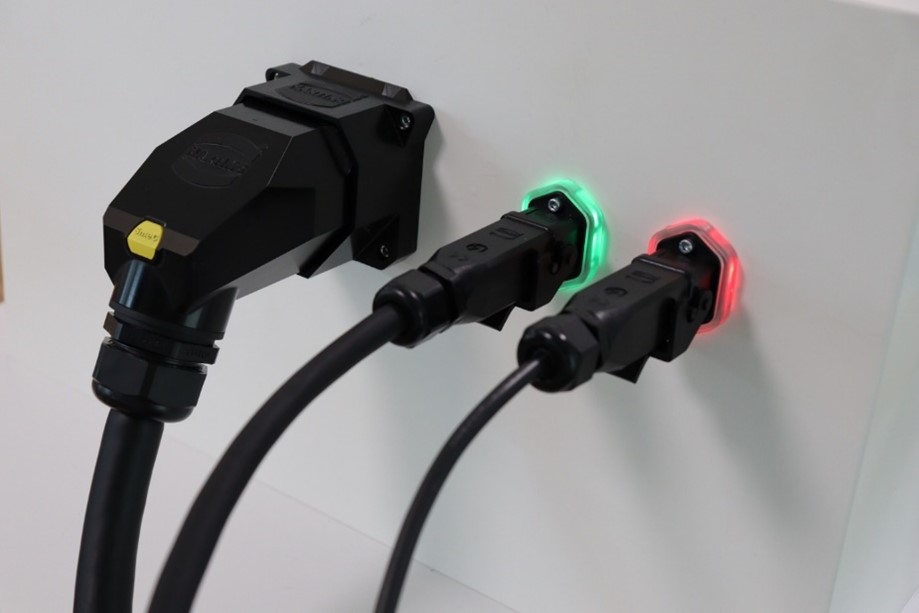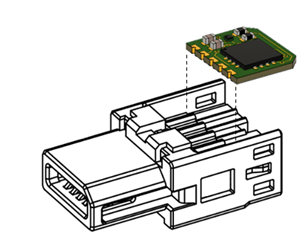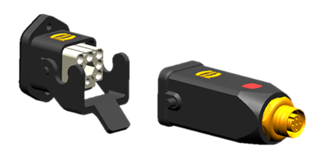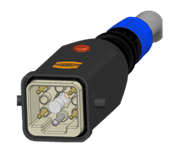Sustainability is one of the most important topics in industrial production today. Not only the materials used must be sustainable, but also the processes. Sustainable processes are efficient and save resources and costs by avoiding and reducing machine downtime. Moreover, one of the most important resources in a manufacturing facility is the working time of the employees. Efficient maintenance and installation times protect it.
Connectors play an important role in the design of sustainable processes. Not only the function of quickly connecting or disconnecting a machine or attachment is important. Modern connectors support the production employee in making a safe and error-free connection. This is especially important in modern modular systems where reconfiguration is common. An error-free connection helps save important resources, such as energy, and time.
SmEC – Our connector concept for modular machines and systems
One of the most important additional functions of a connector is signaling the status of the connection. The connection status contains different parameters depending on the application and connector. The plugin status typically answers the following questions:
- Is the connector connected to the correct mating connector?
- Is the connector fully electrically connected?
- Is the connector fully mechanically locked?
- Is the connector electrically overloaded?
- Are the environmental parameters (temperature, humidity, etc.) within the permitted range?
The status of the plug-in is signaled to the employee by means of an LED, a light ring or also acoustically. In the simplest case, a red/green display is sufficient so that the user can recognize whether there is a malfunction. Modern full-color LEDs with additional flashing patterns or animations indicate other states, such as the presence of voltage. In addition to visual or acoustic signaling, a digital interface also transmits information in much more detail to a control center. The SmEC (Smart Electrical Connector, Figure 1) from the HARTING Technology Group transmits the data via MQTT or OPC-UA PubSub. The data is available in JSON format and can be received and processed by any controller. The Asset Administration Shell also supplies the live data from the connector as a digital twin.

Figure 1 Technology demonstrator Smart Connectors (SmEC) with status display and identification
In addition to signaling the pairing status, the SmEC actively prevents accidental disconnection of the connector using the integrated locking mechanism. This ensures that the components are not damaged and that there is no danger to persons. The connector can only be disconnected after it has been de-energized and the active lock has been released. For this purpose, the SmEC has an integrated voltage and current measurement, which also monitors the connected machine. In this way, the current CO2 footprint can be calculated based on the energy consumption data.
 Figure 2 Technology demonstrator Smart Connectors (SmEC) with status display and identification
Figure 2 Technology demonstrator Smart Connectors (SmEC) with status display and identification
Data diode – Our connector concept for protection against tampering
Measuring the CO2 footprint can also easily be retrofitted to old machines. A data diode protects the measuring device (for example the SmEC) against sabotage (Figure 2), because it only allows the data signals to pass in one direction. This allows data to be sent from a secured network to an unprotected network, e.g. to a dashboard – the protected network is safe from attacks. HARTING has developed a data diode for a connector for this purpose. The usual IoT protocols such as OPC-UA, MQTT or Modbus-TCP are transmitted with a data rate of up to 1Gbit/s. The integration of a real hardware data diode, which consists of the laser diode on the transmitter side and a photodiode on the receiver side, makes it impossible for the data to flow back.

Figure 3 Functionality of a data diode in the connector
Smart ix – Our connector concept for small connectors with identification function
To determine whether a connector is connected to the correct mating connector, the connector must be identifiable. In the simplest case, this is solved with additional electrical contacts as coding pins. In contrast to mechanical coding, the machine control system determines which attachment is currently connected. However, this method quickly reaches its limits, especially with large flexible systems. In addition, electrical coding with coding pins uses an unnecessary number of contacts. A more suitable variant is the identification of the connector using a bus system and a small microcontroller or alternatively via NFC (Near Field Communication). This gives each connector a unique ID that is assigned to a corresponding part (e.g. attachment or tool). The fact that this method also works with very small connectors can be seen from the Smart ix from HARTING (Figure 3). The Smart ix is a small 10-pin connector in which a microcontroller is integrated. Accurate identification is possible using the microcontroller. The ID is used in the device/machine control to establish a link with the connected component. This way, even simple components such as lamps, door contacts or analog sensors can be identified. The control tells the user whether the components are connected to the correct port.

Figure 4 HARTING Smart ix Industrial – Identification of small connectors
Han Protect – Han® 3A – Our connector concept for simplified repair processes
There are often unwanted downtimes in production because the required skilled personnel are not on site at that time. For example, a defective fuse may only be replaced by a trained person. Because the fuse is located in the control box, other people do not have access. One way to make the fuse accessible from the outside is to integrate it into a connector, such as the Han Protect (Figure 4). Since replacing the fuse requires disconnecting the connector, the work is also possible for easily instructed persons, especially when low voltage is involved. This speeds up repair processes and reduces downtime – which has a lasting impact on resources.

Figure 5 Han Protect -Han® 3A connector with integrated fuse

The HARTING Technology Group offers innovative solutions in the field of connectors that improve sustainability in industrial production. The smart connector concepts presented here will be on display in a technology demonstrator at SPS 2023 in Nuremberg.